Meghalaya Villager Uses YouTube to Make Biodegradable Plates, Starts Own Business!
Dilseng Sangma had no formal training or financial resources to pursue his idea. But he persevered. Today, his forest-fringed manufacturing unit has won him the appreciation of the district collector!

Since time immemorial, the Areca nut has been cultivated in the lush forests of Meghalaya as an important commercial crop.
Crushed into small pieces, it is the primary base for the popular paan with or without betel leaf. It also used to make paan masala or supari. Besides, the crop has high commercial value in the pharmacological, food and fashion industries as well.
However, Dilseng Sangma, a young entrepreneur from Williamnagar in the East Garo Hills district, but working out of the remote village of Wajadorensaram, is using this crop to make disposable plates and bowls using its leaves that are biodegradable.
While the plant’s commercial value mostly lies in the nut, what Dilseng has done is focus on the sturdy sheaths attached to its leaves.
“Back in December 2015, I was thinking about how we could substitute the cheap non-biodegradable plastic and thermocol disposable plates popularly used in large gatherings with a more eco-friendly option,” says Dilseng, speaking to The Better India.
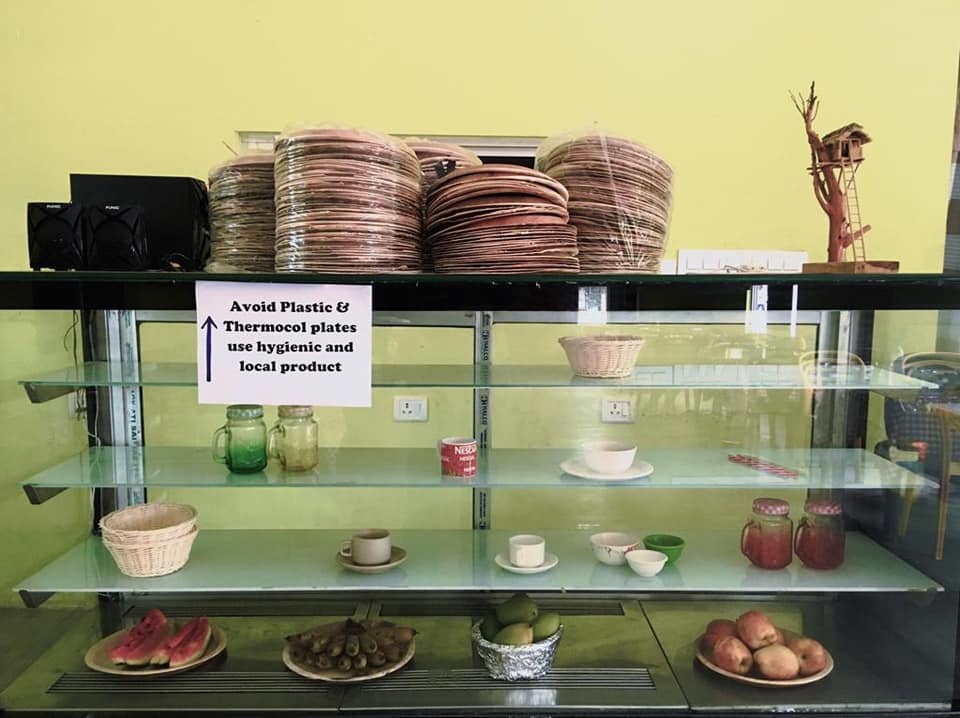
He continues, “I spoke to my cousins and friends about this problem, and that’s when I fell upon the option of the Areca nut leaf. But I didn’t know how to proceed. My friend, a government official, suggested YouTube, where I could find videos about this process. For over two years, beginning December 2015, I watched videos and learned about the process of making these plates.”
Yes, you heard that right. He learnt how to make plates out of Areca leaves from watching multiple YouTube videos, and did not receive any formal training whatsoever.
Following this, he acquired the necessary finances via loans from banks, which he used to purchase a press machine and other equipment required to make these plates. These, too, were purchased online. His friends helped him set it up.
In June 2018, he started a small cottage industry enterprise in Wajadorensaram, a very remote village in East Garo Hills district, and started manufacturing disposable plates and bowls. Today, it makes about 250-300 plates and bowls a day.
“Fortunately or unfortunately, in the Garo Hills, instead of forests, you’ll see Areca plants. With their leaves lying all around us, why not do something useful with it,” adds Dilseng.
How is the disposable cutlery manufactured?
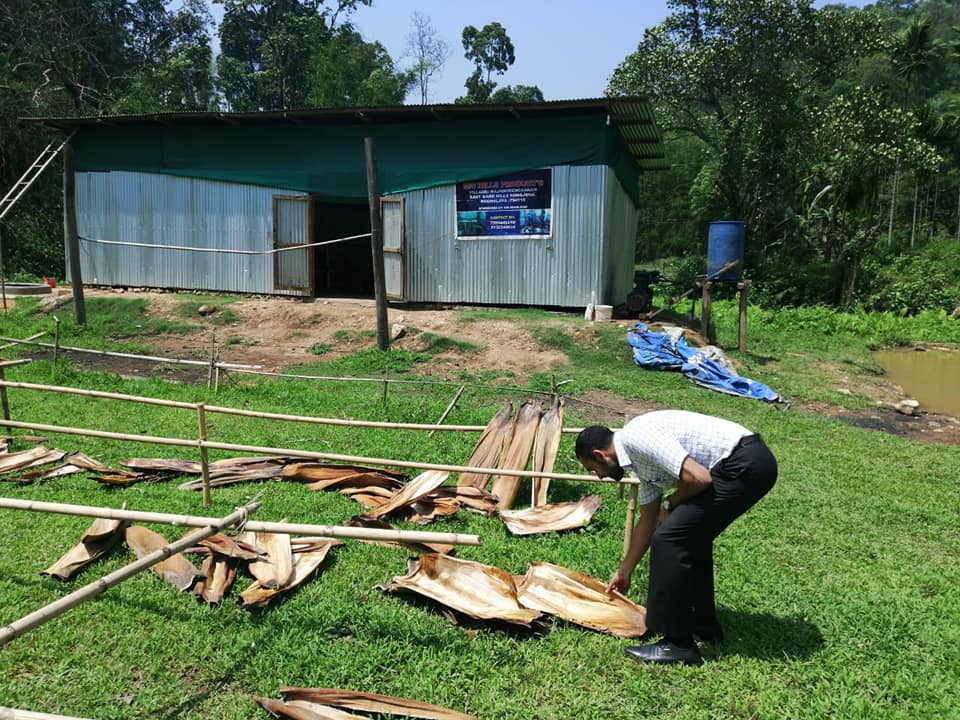
“It starts with the collection of these leaves in the area around my home and the village,” he says.
In Barpeta, Assam, makers of similar biodegradable plates pay Re 1 to anyone who brings in Areca leaves. Taking the advice of senior district officials, Dilseng has also started a similar model so that he can expand this collection area. These leaf plates are made from the sheath attached to the arecanut leaf which covers the fruit.
“After collection, the sheaths are first washed at a nearby stream, then brushed and finally cleaned again at a washing tank we constructed. After washing, we dry them for a few days outside my unit and then it’s just a simple press machine, where the dye we use gets heated. After that, we place the sheath in between, press the machine into action, and 15 seconds later, the plate is ready,” informs Dilseng.
“It’s a simple process, but I have only one machine and limited dye, which can only make plates and bowl or a particular type. Today, there is demands for small plates, plates with partition, etc. I want to expand my business and earn some profits, but I need more machines to expand my product range and sale,” he adds.
Fortunately, for Dilseng, his work caught the attention of the district administration.
“I saw some of these leaf plates in one of our office canteens and enquired where these plates were coming from. To my surprise, I found out that these plates were being manufactured in my district. We tracked Dilseng Sangma, called him for a meeting, and earlier this week, went to his unit to try and understand how we can support him,” says Swapnil Tembe, Deputy Commissioner of the East Garo Hills district, speaking to The Better India.
“At present, he has only one machine, but that isn’t enough. There is a huge domestic and international demand for these plates. Potential clients around the world say they need 50,000 or 1,00,000 plates. Dilseng’s enterprise is very new, and he cannot manufacture these items on a large scale. However, we are going to use various government schemes to help him expand the business and see to it that he has at least ten machines. This will improve sales and create greater employment opportunities. It also has export potential,” he adds.
One such scheme is the National Rural Livelihood Mission that supports self-help groups (SHGs). The administration plans to engage and support SHGs in Dilseng’s village because a certain amount of money is given to them to start their small businesses.
So, these SHGs will begin by helping Dilseng and then branch out.
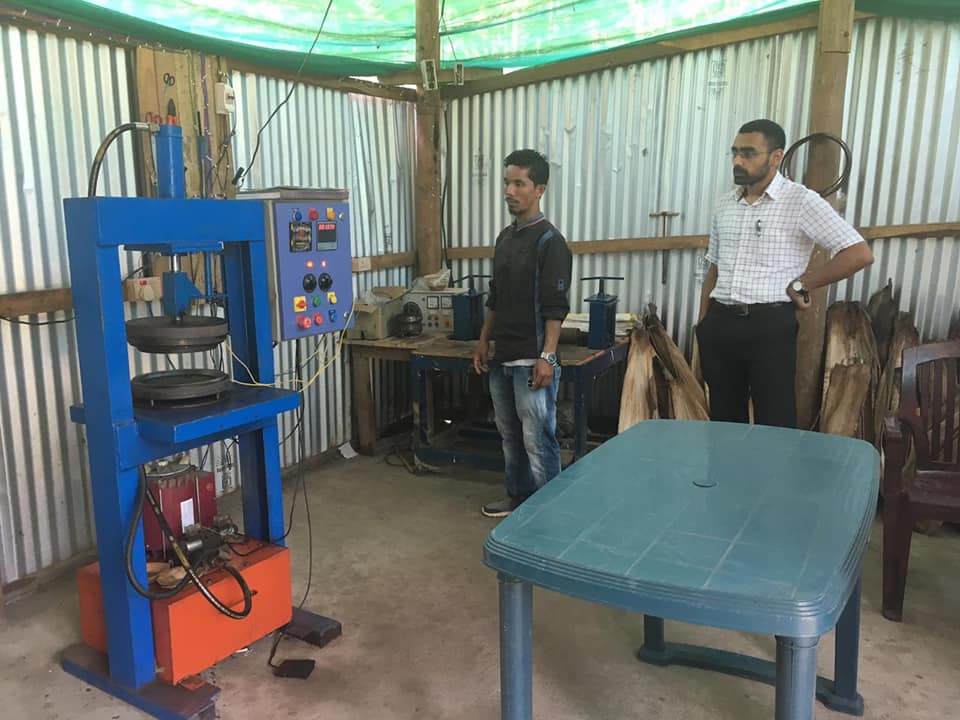
There is also the Meghalaya government’s Basin Development & Livelihood Promotion Programme, through which the district administration will send him to different exposure trips through the region to get a better sense of the business.
“Places like Barapeta in Assam, and one of the districts in Garo Hills are manufacturing and exporting these plates. To give him more exposure, we will send him on these trips along with our field functionaries, so he gets a better idea of how to export, make different varieties and market his product. We will organise all that training from our side,” says Swapnil.
The Chief Minister’s Office also conducts an Entrepreneur of the Month contest. The winner receives a prize money of Rs 1 lakh.
The district administration plans to submit Dilseng’s name into that contest. If he wins, the money could be used as capital to expand his business.
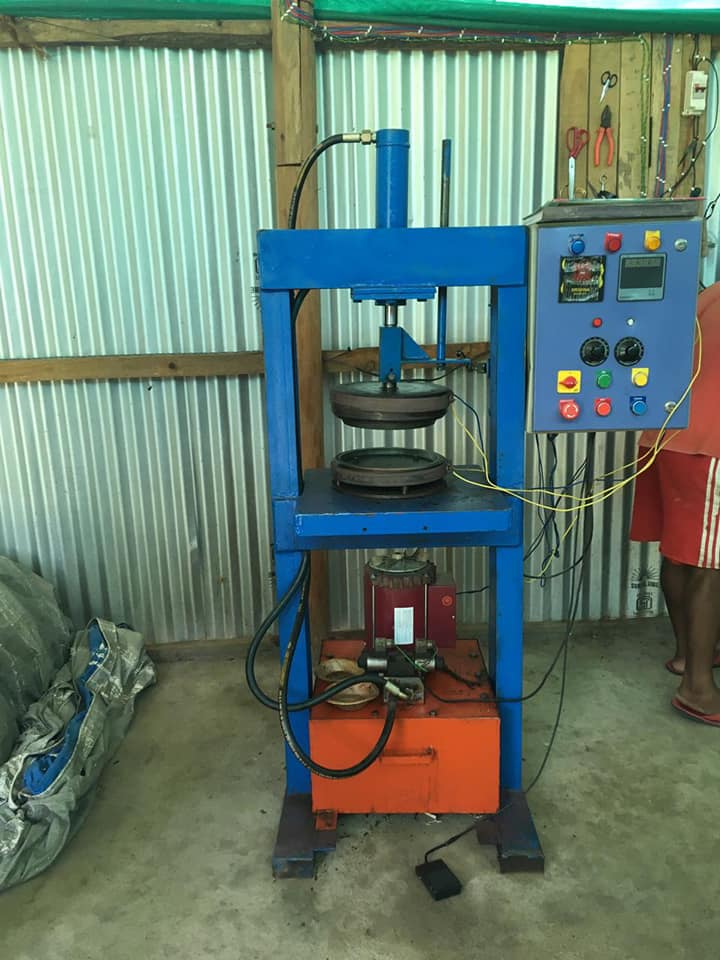
“We have also resolved to use these plates in our offices for official meetings, and functions. I am also using them at home. We want to do everything possible to support such businesses,” he says.
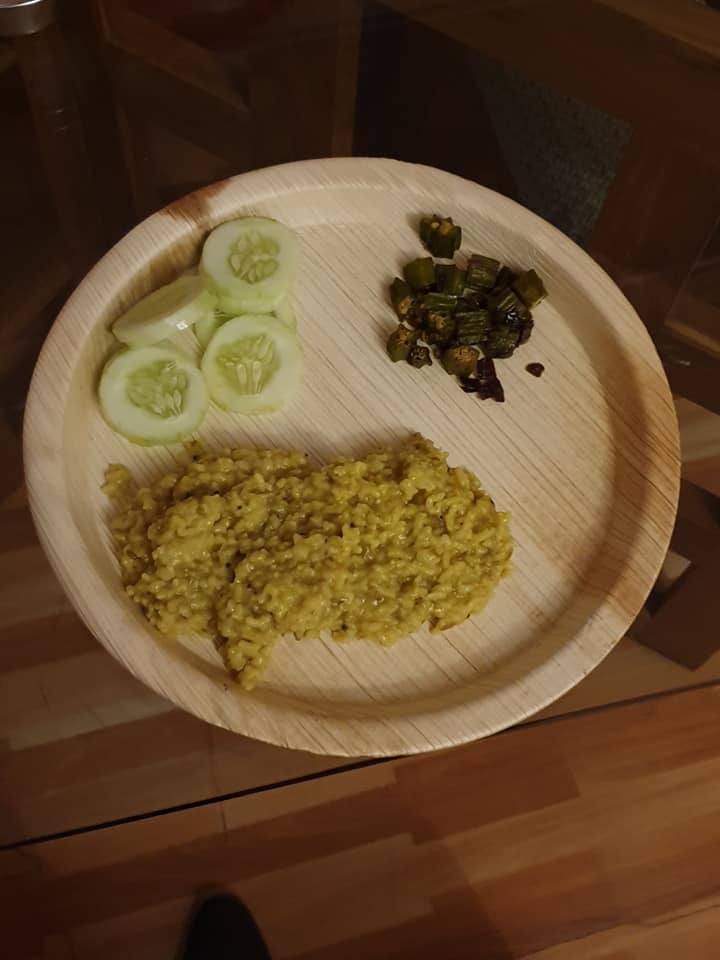
Although the peak season for the availability of these leaves is between the first week of November to May-June, Dilseng will have ample raw material for the entire year, provided he can expand his collection area. These leaves are just lying all around in Garo Hills, and barely anyone uses this resource. Thus, he can get an early bird advantage if he increases his collection area, which will enable him to manufacture these plates throughout the year.
In Meghalaya, the demand for these plates, which cost Rs 5 a pop, isn’t much considering the availability of cheap plastic and thermocol. In a state with a low per capita income, people will purchase the cheapest material. However, in major cities across India or abroad, consumers are willing to pay a premium for these plates that are organic and biodegradable, in addition to being made by people at the grassroots.
For Swapnil, promoting such local enterprises is a critical facet of his work.
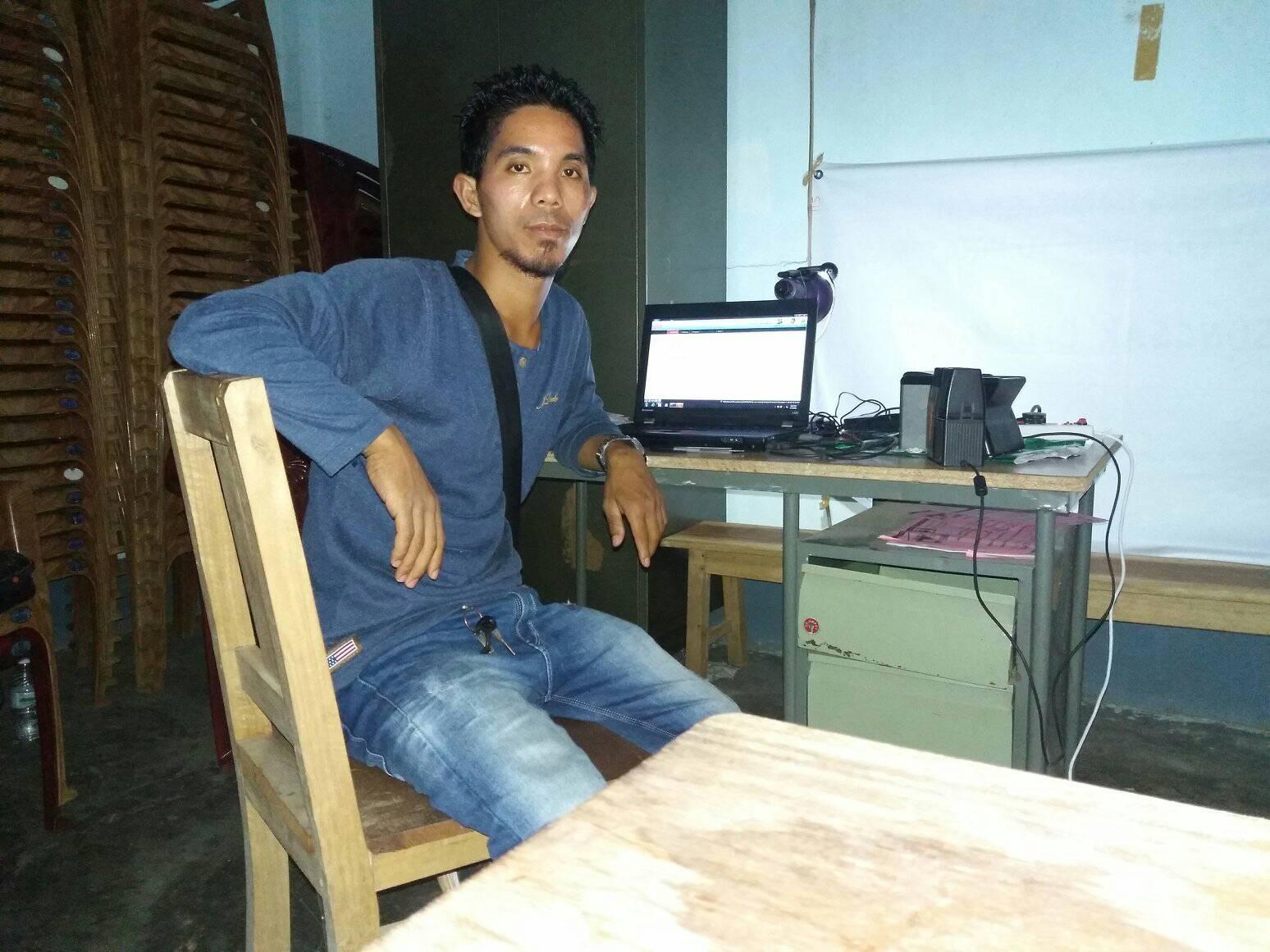
“The last 10-15 years in Garo Hills had been marked by militancy. In these tribal areas, there are still many villages that don’t possess road connectivity. The government schools are in terrible shape, and many students going there are first generation, formal education learners. Once they pass out, employment will be the biggest challenge for them. They have land and resources in abundance, but no skills. This is why the administration is promoting such initiatives, which will open up employment opportunities for the region and help locals become financially independent,” he says.
Also Read: IAS Officers Raise Money for Meghalaya Farmer’s Son: Why You Should Join Them
“If I can expand my business, I will have the opportunity to offer employment to my people. My objective is to upgrade the village and assist school students who are helping me collect the raw material every Friday evening and Saturday morning for pocket money,” says Dilseng.
(Edited by Gayatri Mishra)
Like this story? Or have something to share? Write to us: [email protected], or connect with us on Facebook and Twitter.

Similar Story

Startup’s Innovation Could Help Millions Get Access to Better Brain Health At Home
Ivory, a pioneering age-tech startup founded by Issac John and Rahul Krishnan, aims to redefine the ageing experience by focusing on better brain health, through neuroscience-backed assessments, interactive games, and personalised solutions.
Read more >
If you found our stories insightful, informative, or even just enjoyable, we invite you to consider making a voluntary payment to support the work we do at The Better India. Your contribution helps us continue producing quality content that educates, inspires, and drives positive change.
Choose one of the payment options below for your contribution-
By paying for the stories you value, you directly contribute to sustaining our efforts focused on making a difference in the world. Together, let's ensure that impactful stories continue to be told and shared, enriching lives and communities alike.
Thank you for your support. Here are some frequently asked questions you might find helpful to know why you are contributing?


This story made me
-
97
-
121
-
89
-
167












